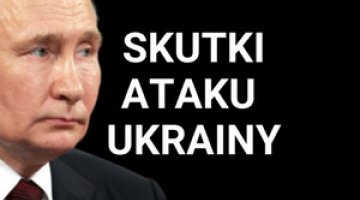Russian progress on key front lines. Day 1056 of the war


The Russians have occupied the built-up area of Toretsk. The north-western outskirts of the town and the mine in its northern part remain under Ukraine’s control and fighting is taking place there. Russia controls 70–95% of its area. Most sources confirm that Kurakhove has passed completely into Russian hands. Only the Operational-Strategic Army Group ‘Khortytsia’, which was responsible for the defence of the town, claimed as late as 11 January that the centre of Ukrainian resistance was holding out on the site of the local thermal power station. Velyka Novosilka came under operational encirclement, and only Velyka Novosilka, bordering Vremivka from the south-west, remains under Ukrainian control. The supply and possible evacuation of the defenders is now only possible via dirt roads.
Russian forces have reached the first of two roads leading west from Pokrovsk, exiting on the outskirts of Udachny. According to Reuters, the coking coal mine located there has completely stopped work (see ‘The prospect of losing Pokrovsk – a blow to Ukraine’s metallurgical sector’). The city’s main supply road, the M04 Donetsk-Dnipro motorway, remains in Ukraine’s hands (Russian troops are 6–7 km away from it). Pokrovsk’s main connection to the northern part of Donetsk Oblast has also been disrupted. Clashes are ongoing over a key road junction on the Pokrovsk-Kostiantynivka route, which is currently not controlled by either side.
After weeks of fighting, Russian troops seized the refractory plant – the main centre of Ukrainian resistance in the centre of Chasiv Yar. They also resumed offensive operations north-west of Bakhmut, entering Orikhovo-Vasylivka. They also continued to expand bridgeheads on the western banks of the Zherebets River towards Lyman and the Oskil River north of Kupiansk.
As a result of several days of clashes, Ukrainian forces were pushed back from Berdin in Kursk Oblast and ceased offensive operations. More towns and villages came back under Russian control, and they recorded the greatest progress in the northern part of the enemy breakout. The Ukrainians, however, made moves to push Russia out of Makhnovka south of Sudzha and to thus remove the immediate threat from that town.

On 8 January, guided aerial bombs fell on an industrial zone in Zaporizhzhia. The attack killed 13 people and wounded 127, making it one of the bloodiest strikes on the city to date. According to initial reports, the invaders also hit Zaporizhzhia with a rocket, with the air raid siren sounding only after it hit the industrial infrastructure (according to some sources, the Motor Sich plant was hit). Further attacks on the city – this time using strike drones – occurred on 10 and 12 January.
Russia attacked targets across Ukrainian territory, mainly using strike drones. Emergency power cuts as a result of damage to power infrastructure occurred in Kyiv (10 January), Kirovohrad Oblast (11 January), Kherson (12 January) and Zhytomyr and Sumy oblasts (13 January). Damage to facilities was also reported from Kyiv (8, 11 and 13 January), Cherkasy (9, 11 and 14 January), Chernihiv (11 January) and Zhytomyr (14 January) oblasts, as well as Kharkiv and Mykolaiv (9 January). On the evening of 13 January, Sumy was the target of a rocket and air attack. From the evening of 7 January until the morning of 14 January, the invaders are thought to have used a total of 564 strike drones and just seven rockets. Ukraine declared 363 drones and four missiles shot down, while 193 drones were described as locally lost. The Ukrainian Air Force Command introduced additional information in the communiqués, according to which the locally lost drones did not contain warheads, but are only dummy targets.

On 8 January, Ukrainian drones struck the Kristal combine fuel base in the town of Engels in the Saratov region, triggering a fire lasting six days. The facility supplies, among other things, the Russian strategic air force base dislocated there. This is the biggest success of Ukrainian operations deep inside Russian territory since last August, when the Rosreserv fuel depot in Proletarsk in the Rostov region was destroyed. Drones also attacked Engels on 14 January and, according to some sources, again led to a fire at the fuel base (damage to two companies was reported).
On 10 January, Ukrainian drones caused a fire at the PlastFaktor plant in the town of Krym in Rostov Oblast, on 11 January at the Taneco refinery in Nizhnekamsk in Tatarstan, and on 14 January Gazprom’s liquefied gas storage facility in Kazan (earlier, the Astra channel reported that the hit had occurred at the Kazanorgsintez plant). Other strikes, including on Saratov (8 and 14 January), Gatchina in the Leningrad region (10 January) and Nizhnekamsk again (14 January), had little success.

On 9 January a meeting which had been postponed since last October took place. The 25th meeting of the contact group of states providing Ukraine with military support in the Ramstein format. It became an opportunity to take stock, with some participants expressing concern about whether cooperation in this format would continue after the change of power in Washington. The United States and Ukraine gave divergent figures on the value of the military aid which has been transferred and pledged to date. According to US Defence Secretary Lloyd Austin, it amounted to $122 billion as of February 2022, Pentagon spokeswoman Sabrina Singh indicated a figure of $126 billion and the Ukrainian Defence Ministry indicated $145 billion. ‘Roadmaps’ setting out strategic goals for the development of Ukraine’s Defence Forces until 2027 under eight so-called coalition capabilities (air, air defence, naval, artillery, armour, IT, drone and demining) were approved, but no details were revealed.
On the occasion of the contact group meeting, several countries presented new support packages, which Ukraine calculated to have a total value of €2 billion (according to President Volodymyr Zelensky) or the same amount in dollars (according to Defence Minister Rustem Umerov). The 74th package funded from the Presidential Drawdown Authority, worth $500 million, included AIM-9M air-to-air missiles for F-16 fighters and AIM-7 and its modification RIM-7 for post-Soviet Buk-M1 air defence systems (as part of the FrankenSAM project), 230 kg JDAM-ER and 100 kg GBU-39/B guided aerial bombs, tank bridges, small arms and ammunition. Canada’s Ministry of Defence announced a $300 million donation – $200 million to the Czech initiative to purchase munitions for Ukraine (Canada had previously set aside $53 million for this purpose) and $100 million to acquire Ukrainian drones in accordance with the ‘Danish model’ (Denmark was the first to change the form of military aid from direct supply to paying for Ukrainian production). London announced 30,000 FPV drones as part of the drone coalition (worth around £45m) and Oslo announced $28m for the purchase of drones as part of the UK-coordinated International Fund for Ukraine. Germany pledged the dispatch of 50 additional missiles for the IRIS-T air defence system (the Ukrainian defence ministry recalled that Berlin had pledged to deliver a further six systems of this type in 2025). Iceland pledged €2 million in the ‘Danish model’ and Poland pledged another support package, without providing details.
The day after the Ramstein format meeting, German news channel n-tv revealed the assumptions of the first support package for the Ukrainian army prepared by the German authorities in 2025. It is to consist of 22 Leopard 1 tanks, 25 Marder infantry fighting vehicles, 16 howitzers of unspecified type, an IRIS-T SLM/SLS air defence system, two launchers for the Patriot system, seven Gepard self-propelled anti-aircraft guns with 120,000 35 mm cartridges, 250,000 artillery shells, 3,500 Helsing circulating ammunition and six Sea King helicopters. Deliveries of the listed armaments had already been announced. It is unclear whether they will be delivered simultaneously, according to the n-tv message. The declared number of artillery shells in particular raises doubts about this. On 13 January, the delivery of 4,500 drones worth a total of €5 million to Kyiv was announced by the new Lithuanian Defence Minister Dovilė Šakalienė.
President Joe Biden’s outgoing team has failed to use $4bn from the Presidential Drawdown Authority mechanism, the Pentagon reported on 11 January. The funds will be transferred to Donald Trump’s administration with the understanding that they are to go to further military support for Ukraine.
On 13 January, Germany ceremonially handed over to Ukraine the first of 54 RCH 155 (Remote Controlled Howitzer 155 mm) self-propelled howitzers on a Boxer wheeled armoured personnel carrier chassis. The German-funded contract started in January 2023, and six howitzers are ready or in the final stages of production. They are expected to remain in Germany until April and will be used to train Ukrainian crews. Ukraine is the first user of the RCH 155 which, due to the chassis and armament used (analogous to that used in the several tonnes heavier PzH 2000 howitzer on a tracked chassis) remains an experimental design. At the ceremony, the CEO of KNDS Deutschland, which manufactures these guns, Ralf Ketzel, stated that Ukraine would also receive Boxer RCT30 wheeled infantry fighting vehicles, but did not provide details. Meanwhile, on 7 January, Rheinmetall CEO Armin Papperger announced that the first KF41 Lynx tracked infantry fighting vehicle had been handed over for testing in Ukraine at the end of last year.
The words of the heads of the German armaments companies should be seen first and foremost as a competitive bid, which German funding may help to make a reality. It should be remembered that last June Papperger announced that a Lynx plant would be up and running in Ukraine by the end of 2024, but so far no plant has opened. German companies are not only competing internally (for state funding), but are also trying to push Sweden’s BAE Systems AB out of the Ukrainian market. In June 2023, Ukraine decided that its target infantry fighting vehicle would be the CV90, manufactured in Sweden and already in use by the Ukrainian army on the front line.

The 12th Army Corps has been formed in the Ukrainian Land Forces, as reported by MilitaryLand.net on 8 January and indirectly confirmed by the Ministry of Defence. The formation of a new – the fourth in a row – corps in the land forces was first reported in October 2024. Although it is not known which units are included, it is likely that the core of the new corps will consist of newly formed brigades with numbers beginning with 140 and/or 150. In 2023, corps numbers 9, 10 and 11 were formed in the land forces, and the 7th Landing and Assault Corps in the landing forces. Although each corps is intended to contain four to five all-military brigades (plus support and security units), their structure and size varies. The 9th corps and 10th corps each comprise three brigades, while the 7th KDSz and 11th corps each have ten.
On 8 January, the State Bureau of Investigation reported that last year 120 officials suspected of involvement in organising the illegal movement of men subject to conscription across the border had been uncovered. Sixty-one indictments were filed with the courts, the acceptance of bribes totalling 11.4 million hryvnias (about $270,000) was documented and the perpetrators’ assets worth about 11 million hryvnias (more than $250,000) were seized. Among the most common ways of enabling departure were the falsification of medical diagnoses, the granting of humanitarian driver’s licences and transfers across the border beyond checkpoints.
Also on 8 January, the commander of the Ukrainian Land Forces, Mykhailo Drapatyi, assured the president that he had taken measures to improve the situation in the 155th Anna Kyiv Mechanised Brigade. Among other things, the focus was on manning it with experienced officers and encouraging soldiers who had left the unit without leave to return. On 12 January, the head of the Censor.net news portal Yuri Butusov stated that Zelensky had issued a decision to stop creating new brigades and to send enlisted conscripts to existing units.
On 8 January a Donetsk Oblast court reported the acquittal of the battalion commander of the 110th Mechanised Brigade, who refused to obey orders to seize and hold defensive positions on the front line. As a result, they were occupied by the enemy. The court ruled that the military officer could not carry out the order due to the poor condition of the subunit – its manning was only about 40% (33 out of 314 soldiers had not even completed basic training and others were partially incapacitated due to injuries). The verdict confirmed information about the crisis situation in the units fighting at the front.
On 9 January, the Ukrainian parliament extended until 1 March the deadline for the voluntary return of soldiers who had left units without leave. According to the legislation adopted at the end of November, in order to avoid criminal liability, soldiers who left their unit without leave for the first time had to return to duty by 1 January this year. On the same day, the State Bureau of Investigation announced that by the end of last year, 7,000 soldiers who had previously abandoned their units had returned to them.
On 10 January, Prime Minister Denys Shmyhal stated that approximately 950,000 men had been granted deferment from military service at the request of companies. This figure was accepted by the Ministry of Defence and the General Staff. According to Shmyhal, this fact does not adversely affect the course of mobilisation.
On 14 January, Minister of Strategic Industry Herman Smetanin announced that some 30,000 pieces of defective mortar ammunition had been withdrawn from units at the front – they had the wrong diameter and their powder charges were poor quality. Smetanin provided assurances that ammunition production is now proceeding normally – more than 32,000 pieces have already been delivered.

On 9 January, the State Special Communications Service reported that the number of cyberattacks on Ukraine increased by 70% in 2024, with 4,315 incidents recorded, compared to 2,541 the year before. Hackers most often attack critical infrastructure in the energy sector, government institutions, defence industry companies and telecommunications operators. The most popular tools are mass mailings of malware and phishing emails.
Also on 9 January, the deputy head of the Ukrainian police, Andriy Nebytov, revealed that 352 cars belonging to the military and public security institutions had been set on fire in 2024 on the orders of the Russian intelligence services. There were also 149 cases of the destruction of railway relay cabinets and 57 arson attacks on military commissions, post offices and police stations. Most of these incidents took place in Kyiv, Odesa and Kharkiv oblasts. 288 arsonists were detained.

On 11 January, President Zelensky announced that two lightly wounded North Korean army soldiers had been taken into Ukrainian captivity in Kursk Oblast. They are being interrogated by SBU officers assisted by interpreters from South Korean military intelligence. One of the captives was carrying a Russian military booklet issued last autumn in the Republic of Tuva and containing the details of a Russian citizen. On 13 January, South Korean military intelligence estimated that at least 300 North Korean soldiers had been killed and another 2,700 wounded on the Ukrainian front.
The Russian occupation authorities have for the first time conducted the forced conscription of residents of occupied parts of Kherson and Zaporizhzhia oblasts, Ukrainian military intelligence reported on 9 January. From 1 October to 31 December 2024, some 300 people were drafted into service. The administration is forcing Ukrainians under the age of 60 to register with military recruitment offices. If they refuse, the occupiers threaten them with dismissal and the loss of social payments. In addition, Russia is trying to attract residents of the occupied areas to contract service by promising a one-off payment of 2.5 million roubles (about $25,000). In Russia, this amount is approximately 2 million roubles.





